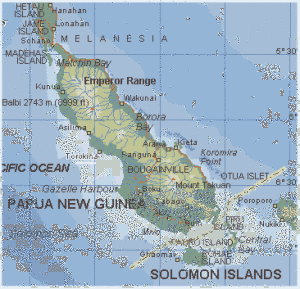 The IIRP eForum provides short, hopeful emails that include brief summaries and links to significant articles, research reports and other information about the growing field of restorative practices. On February 24 the eForum posted this book review, "Commitments to Reconciliation: A Review of Reconciliation and Architectures of Commitment: Sequencing Peace in Bougainville" by IIRP professor and founding faculty member Frida Rundell. Rundell reviews book 2 of 3 published to date by the Peacebuilding Compared Project (http://peacebuilding.anu.edu.au) of the Centre for International Governance & Justice (CICJ) of the Australian National University (ANU), Canberra.
The IIRP eForum provides short, hopeful emails that include brief summaries and links to significant articles, research reports and other information about the growing field of restorative practices. On February 24 the eForum posted this book review, "Commitments to Reconciliation: A Review of Reconciliation and Architectures of Commitment: Sequencing Peace in Bougainville" by IIRP professor and founding faculty member Frida Rundell. Rundell reviews book 2 of 3 published to date by the Peacebuilding Compared Project (http://peacebuilding.anu.edu.au) of the Centre for International Governance & Justice (CICJ) of the Australian National University (ANU), Canberra.
The researchers are: project leader John Braithwaite, ANU professor, Australian Research Council Federation (ARC) fellow and founder of the Regulatory Institutions Network (RegNet) at the ANU; Hilary Charlesworth, Chief Investigator and Legal Frameworks director, ANU professor and ARC laureate fellow; Valerie Braithwaite, ANU professor and RegNet director; Kate Macfarlane, project officer and Kylie McKenna, researcher.
“This ambitious project will cover up to 50 armed conflicts and is expected to span 20 years,” the researchers write. “Each case will stand alone as contextually rich accounts of successes and failures of peacebuilding in that nation as well as helping to develop an integrated theory of the governance of peacebuilding in societies suffering armed conflict. … The first five years of the project will focus on Indonesia, the Pacific and South-East Asian case studies.”
Rundell writes:
Bougainville, an autonomous region of Papua, New Guinea, is the setting for Braithwaite, Charlesworth, Reddy and Dunn’s 2010 research report, Reconciliation and Architectures of Commitment: Sequencing Peace in Bougainville. In Bougainville, the hope is that the attempts at peacemaking have provided a foundation for future resolutions to be built through skillful conversations.
Bougainville Island, east of Papua, New Guinea, and northwest of the Solomon Islands, has suffered a decade of civil war. A colonial history of mining exploitation, indentured labor and abuse inflicted by other countries left Bougainville susceptible to internal conflict. The fact that the international community did not support Bougainville’s independence heightened the citizens’ vulnerable plight.
The Peacebuilding Compared process allowed researchers to describe the cost of Bougainville’s decades of civil war. Loss of life had previously been underreported due to political interests and journalist restrictions. A generation of children missed out on education. These losses clearly show that Bougainville was a pawn easily sacrificed by the international community in the interests of outside enterprise and colonial policy.
The way Bougainville attempted to move from conflict to peace involved three elements that the authors term “top-down” architecture, “bottom-up” development and “middle-out” links between the two. Top-down constituents included government and other organizations, e.g., the Australian mining industry, which was interested in exploiting the mineral wealth and the local people. The bottom-up group were members of local tribes who were in conflict with each other. Examples of middle-out groups are women’s movements, youth church organizations and leaders within those groups, who really held the key to the peacemaking process. [emphasis added]
There is much more in the full review, but I'd like to note one paragraph of Rundell's review:
One’s thoughts gravitate to recent conflict areas like Egypt, Libya, Syria and other countries struggling with bottom-up and top-down disparities. They need the middle-out catalyst to be advocates of just causes. The book provides cautionary and pivotal lessons for politicians and peacebuilders alike. Restorative processes are slow and incremental where all parties play participatory roles in honest conversations.
And coincidentally enough, on the same day the eForum went out, this article appeared at America: The National Catholic Weekly, "A Just Peace Response to Syria," in which Eli S. McCarthy, professor of Justice and Peace Studies at Georgetown University, argues with respect to Syria:
Advocate clearly, strongly and consistently for implementing small-scale restorative justice practices now to attend to key social wounds toward stimulating initial levels of healing and transforming the interactions of hostility. Some of these wounds include distrust, fear, bitterness and vengefulness. Restorative practices could include family conferencing, peacemaking circles in neighborhoods, including relatives of security forces if not members of such forces themselves. There may be local versions of restorative practices that could be highlighted and encouraged. Supporting local civil society members in facilitating these practices would be best. These small-scale efforts today would provide the groundwork for larger-scale efforts later after the violence subsides.
Find McCarthy's full list of suggestions here. It will be fascinating to follow how the use of restorative justice and restorative practices continue to develop in the field of international peace and justice.
